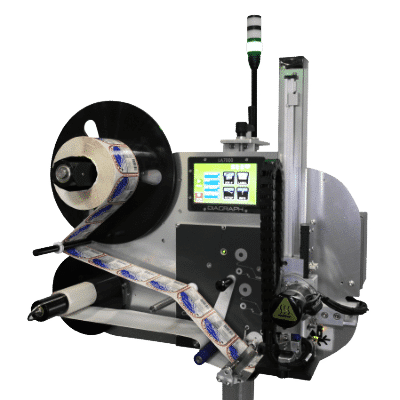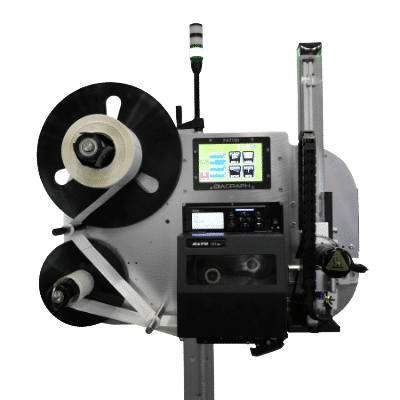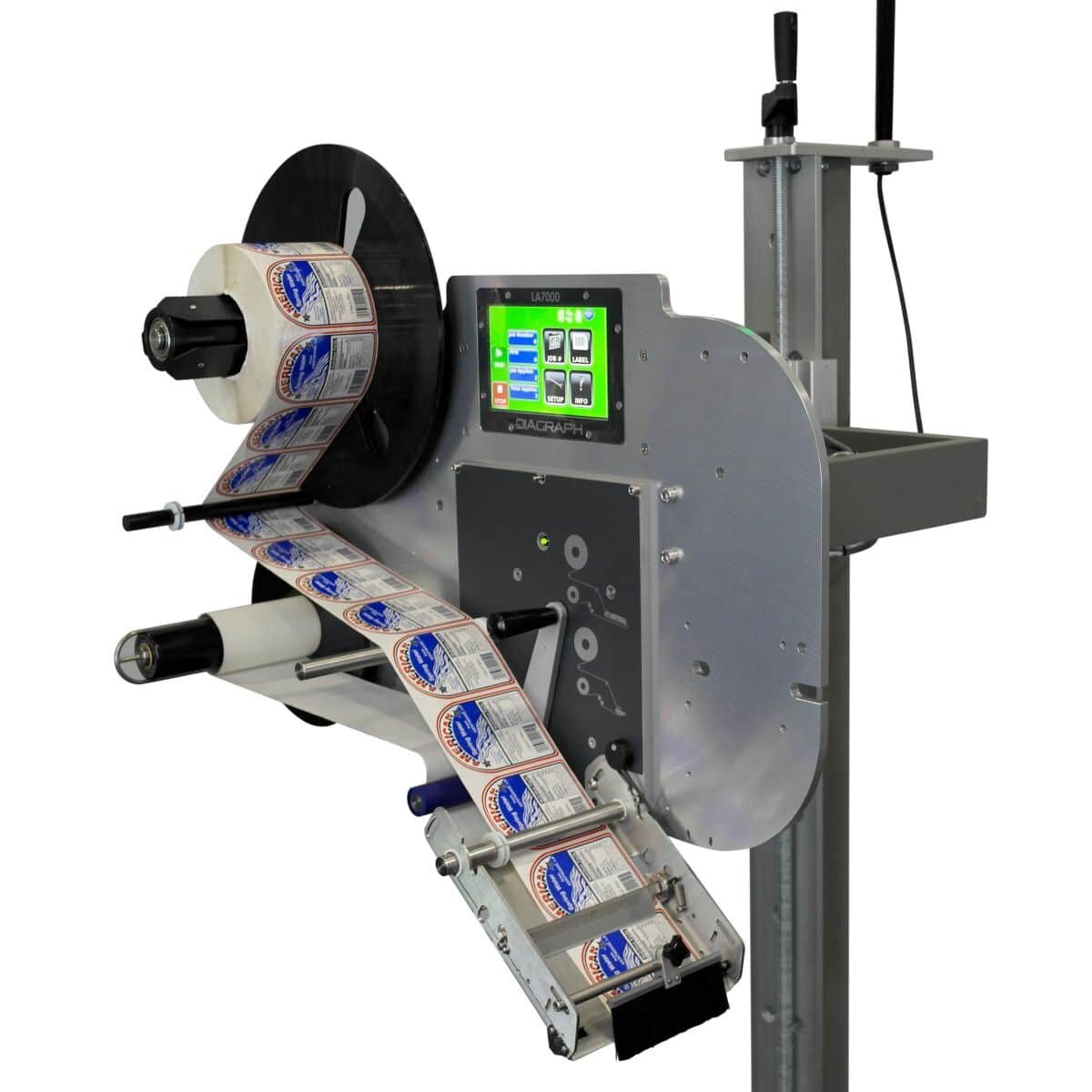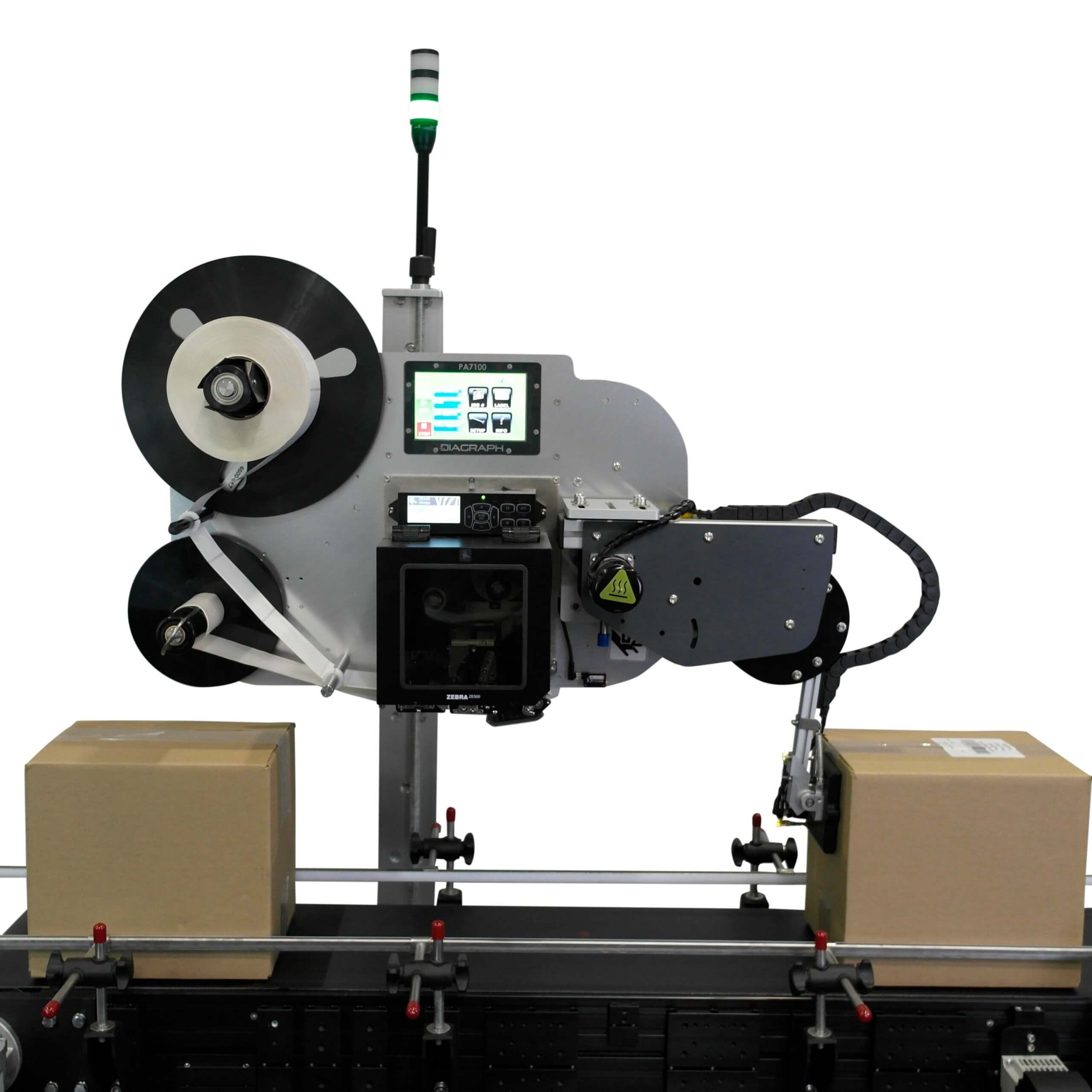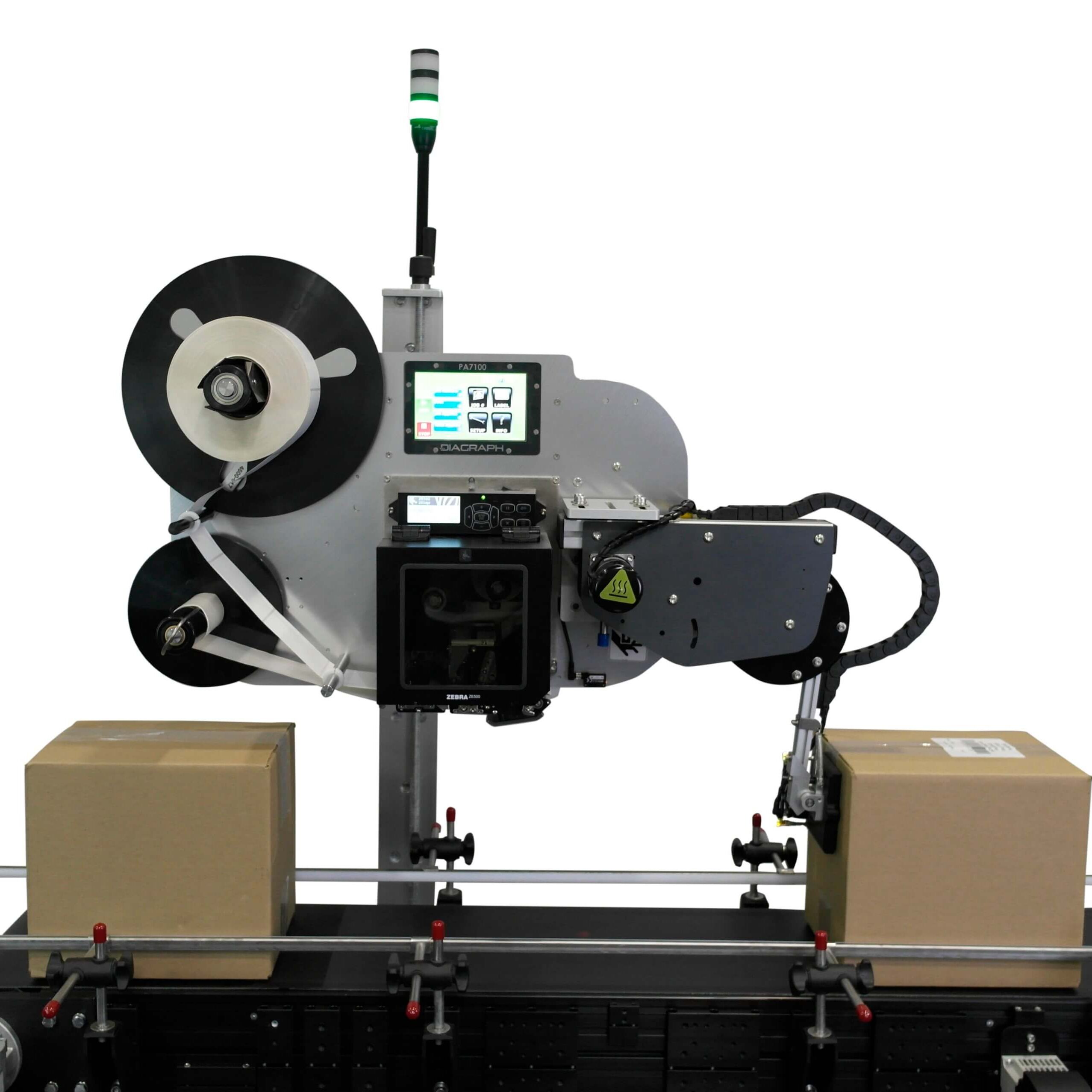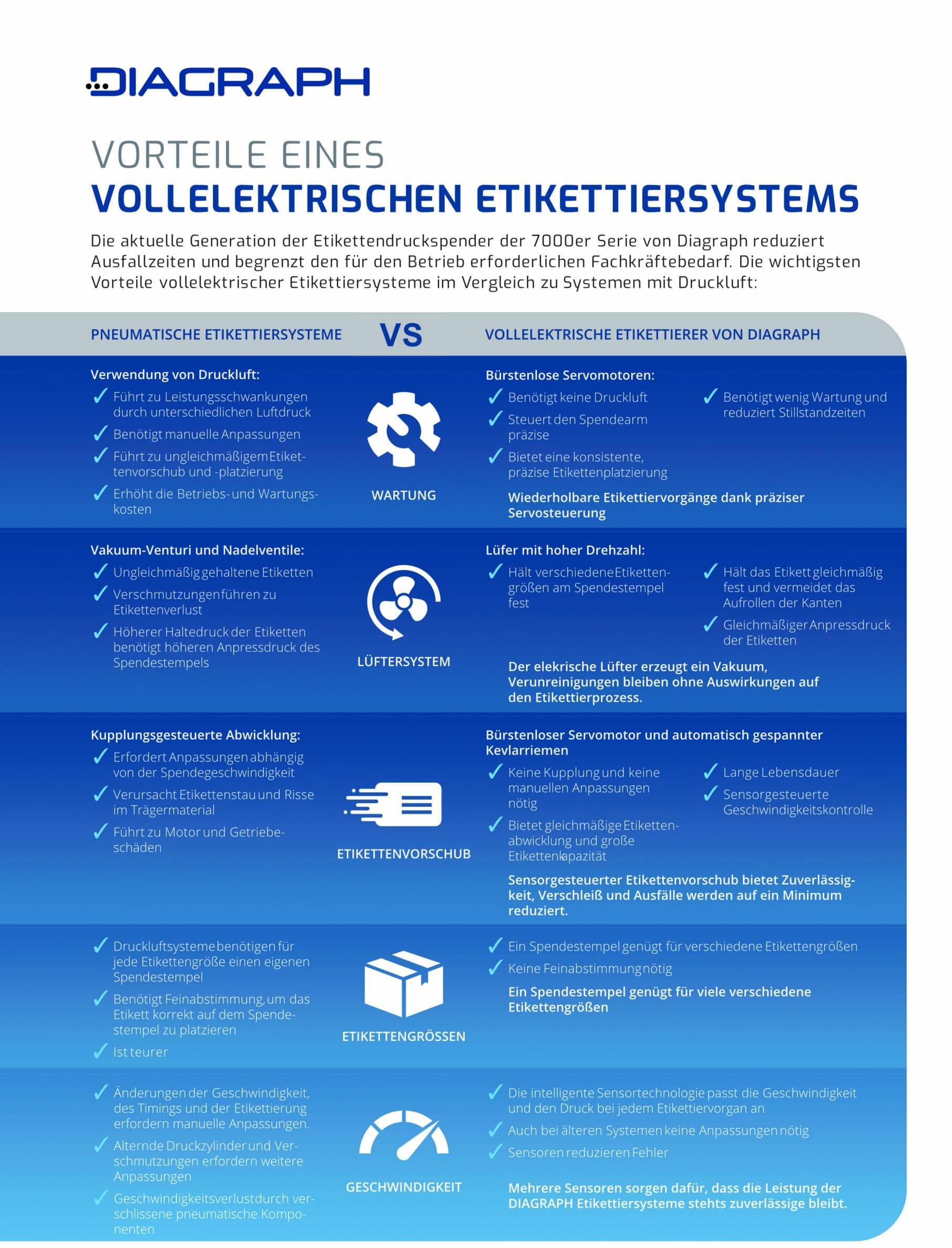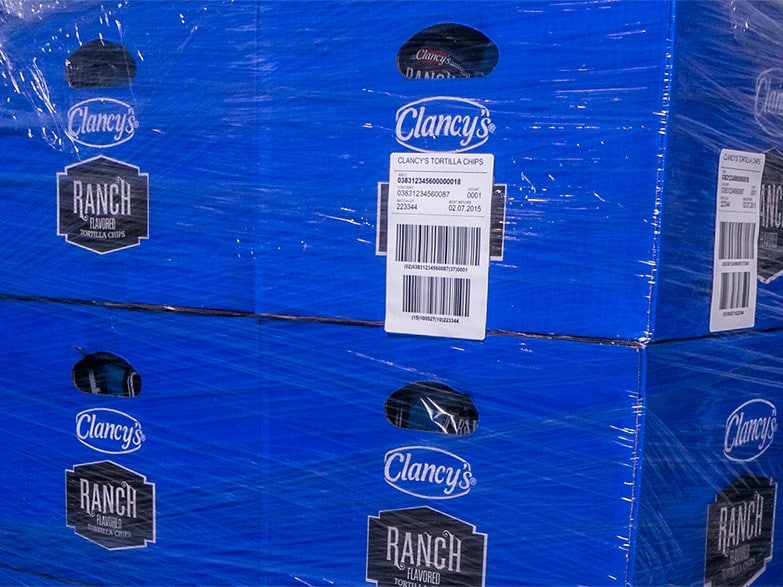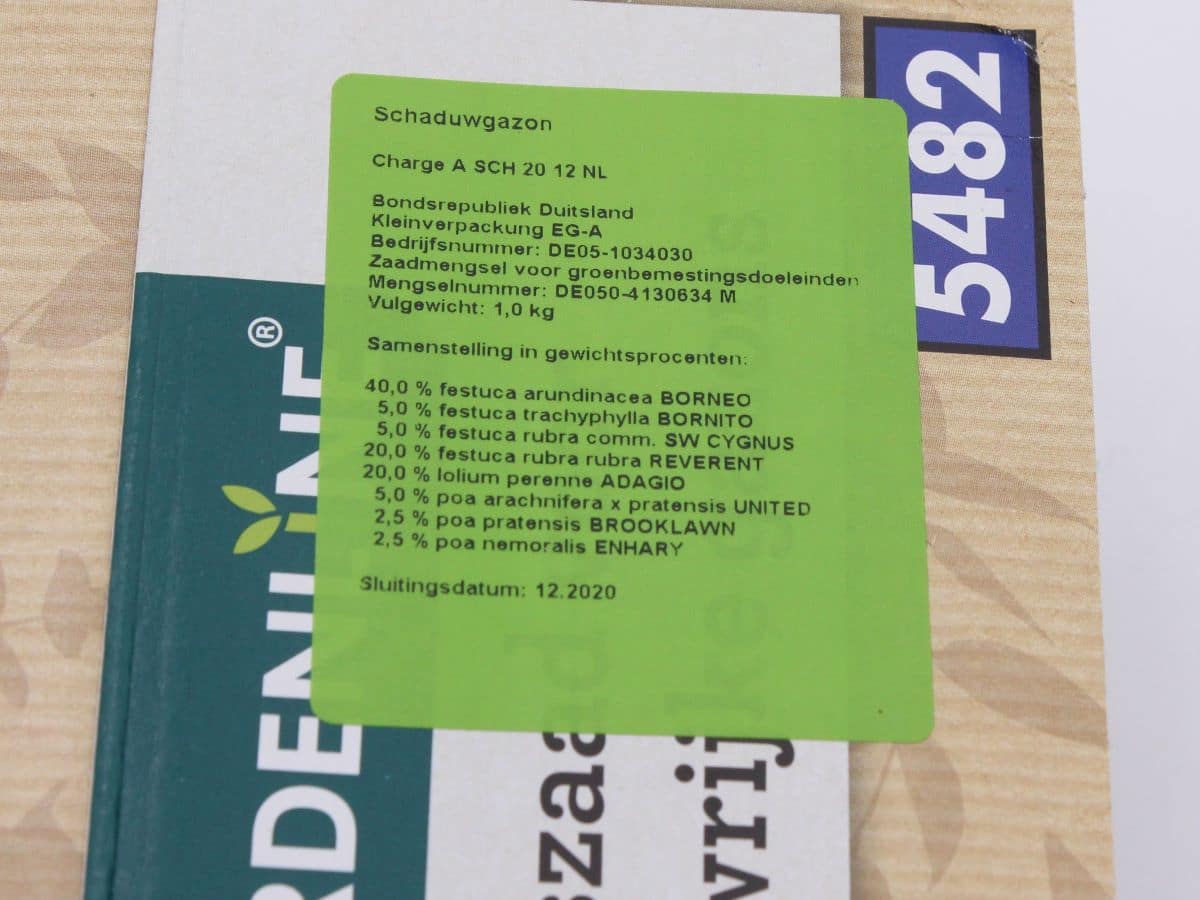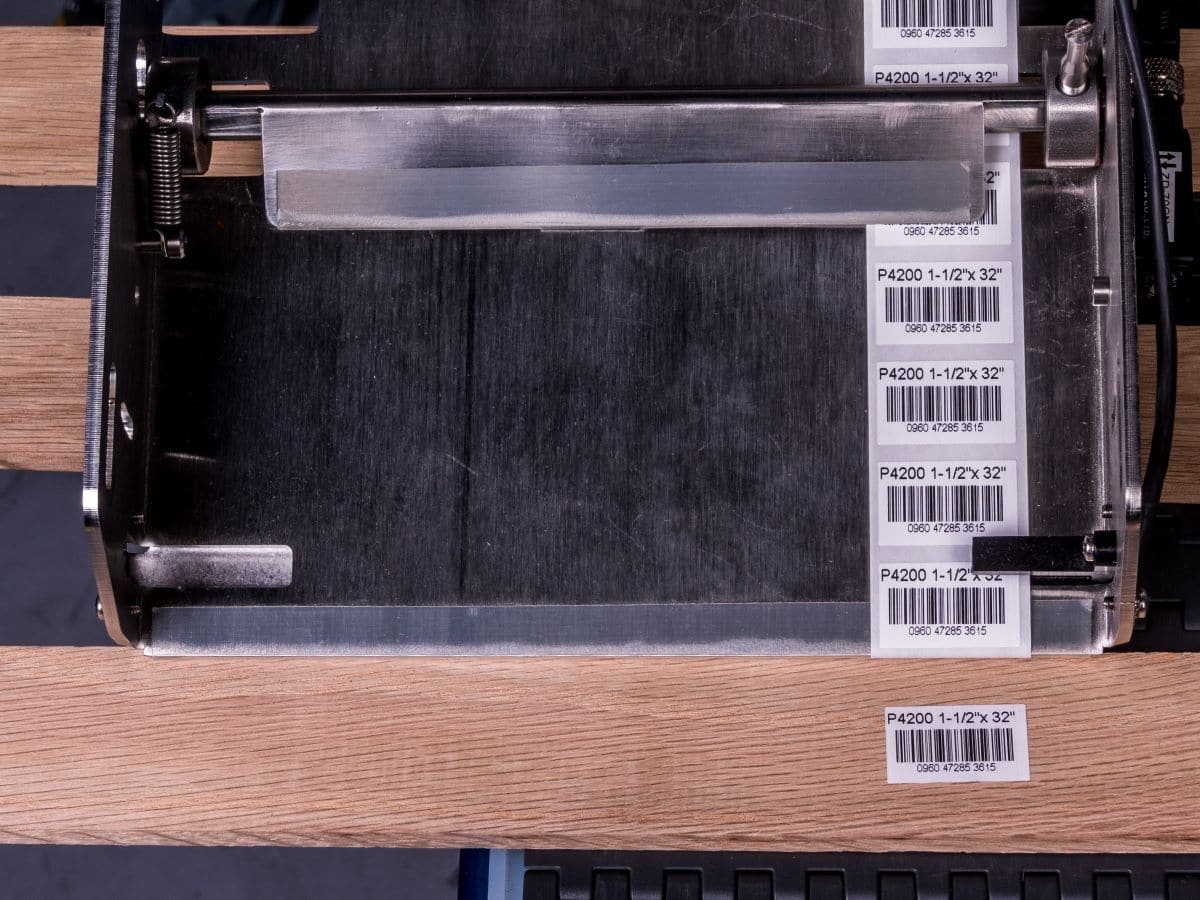Labeling systems by Diagraph
Print and apply labels
Labeling systems are a firm fixture of product identification in industry. These devices are sometimes called labeling machines or labeling devices. Diagraph solutions allow the user to quickly apply large quantities of inexpensive labels to goods and packaging. Modern automatic label applicators are highly reliable. They automatically apply pre-printed labels with precision. Label printers do even more: They allow our customers to print their own labels and apply them to their products in just one step. Our high-performance labeling systems guarantee flawlessly labeled products. Find out more and benefit from a range of advantages.
The LA7000 is an automatic label applicator. It is the labeling system that covers all bases when it comes to all-electric application of pre-printed labels.
All-in-one printing and application! Let our all-electric PA7100 labeling system speak for itself.
The features of labeling systems with printing functionality
Using a labeling machine with printing functionality, the user can flexibly determine what information to print and it is then marked onto the labels. These fully automatic label printers apply these printed labels to the product at the same time, with the product moving past or pausing for application. Modern label printer and applicators use the following features to fulfil their complex task:
Manual and partially automatic labeling systems
Employees use manual labeling devices and partially automatic labeling systems by hand. They are mostly used for small batches. Since a larger system would have to be adapted to process a smaller run, it is simply quicker to work by hand with low volumes. The adaptation would also incur set-up costs. In the time that would take, these smaller batches can already be processed by hand using a partially automatic label applicator with no extra costs. Applicators for manual use are cost-effective solutions with low upfront costs but are only suitable for specific uses.
Manual and partially automatic labeling systems
Employees use manual labeling devices and partially automatic labeling systems by hand. They are mostly used for small batches. Since a larger system would have to be adapted to process a smaller run, it is simply quicker to work by hand with low volumes. The adaptation would also incur set-up costs. In the time that would take, these smaller batches can already be processed by hand using a partially automatic label applicator with no extra costs. Applicators for manual use are cost-effective solutions with low upfront costs but are only suitable for specific uses.
Fully automatic labeling systems
When larger batches need labeling, a fully automatic labeling system is the ideal choice. The software and hardware of many models can be integrated into automated production lines for large quantities. High cycle rates are a significant practical advantage of fully automatic labeling systems. Plus, these devices only require limited levels of skilled labour, keeping operating costs in check.
Fully automatic labeling systems are used to apply labels to products, packaging and containers as part of industrial-level production. Automatic label applicators can be used in this context to apply pre-printed labels to packaging and goods. Or, a state-of-the-art alternative is available: fully automatic labeling systems print the label that is needed and then apply it. Automatic label printers and applicators merge the roles of label applicators and label printers. This merger gives rise to several advantages:
Automatic labeling systems
| Application | large batch in an industrial context optimisation of process quality (time, timing, efficiency, accuracy, quality, cost) |
| Types/Products | automatic label dispenser automatic label print dispenser |
Fully automatic labeling systems
When larger batches need labeling, a fully automatic labeling system is the ideal choice. The software and hardware of many models can be integrated into automated production lines for large quantities. High cycle rates are a significant practical advantage of fully automatic labeling systems. Plus, these devices only require limited levels of skilled labour, keeping operating costs in check.
Fully automatic labeling systems are used to apply labels to products, packaging and containers as part of industrial-level production. Automatic label applicators can be used in this context to apply pre-printed labels to packaging and goods. Or, a state-of-the-art alternative is available: fully automatic labeling systems print the label that is needed and then apply it. Automatic label printers and applicators merge the roles of label applicators and label printers. This merger gives rise to several advantages:
Automatic labeling systems
| Application | large batch in an industrial context optimisation of process quality (time, timing, efficiency, accuracy, quality, cost) |
| Types/Products | automatic label dispenser automatic label print dispenser |
Electric labeling versus pneumatic labeling
All-electric labelers by Diagraph offer several advantages over pneumatic labeling systems. “Pneumatic” is a term used in physics and technology to mean, “a device powered by compressed air.” The technology is well established but it does present some issues in terms of precision and maintenance. Pneumatic systems also require a separate applicator pad for each label size. Our all-electric labeling systems better meet customers’ needs: They perform better than pneumatic solutions in a number of ways:
You will find a detailed run-down of the many benefits of all-electric labeling systems as compared to pneumatic systems in this PDF.
Electric labeling versus pneumatic labeling
All-electric labelers by Diagraph offer several advantages over pneumatic labeling systems. “Pneumatic” is a term used in physics and technology to mean, “a device powered by compressed air.” The technology is well established but it does present some issues in terms of precision and maintenance. Pneumatic systems also require a separate applicator pad for each label size. Our all-electric labeling systems better meet customers’ needs: They perform better than pneumatic solutions in a number of ways:
You will find a detailed run-down of the many benefits of all-electric labeling systems as compared to pneumatic systems in this PDF.
The benefits of Diagraph
Easy and reliable label printing
Example uses of labeling machines
Different uses are possible depending on the type of labeling system: Label applicators/application systems are used to apply pre-printed labels, while label printer and applicators feature an integrated printing module to print their own labels. They then automatically apply the labels as part of the production line. The following examples show selected potential uses of partially automatic print-and-apply systems and label printers.
Example uses of labeling machines
Different uses are possible depending on the type of labeling system: Label applicators/application systems are used to apply pre-printed labels, while label printer and applicators feature an integrated printing module to print their own labels. They then automatically apply the labels as part of the production line. The following examples show selected potential uses of partially automatic print-and-apply systems and label printers.
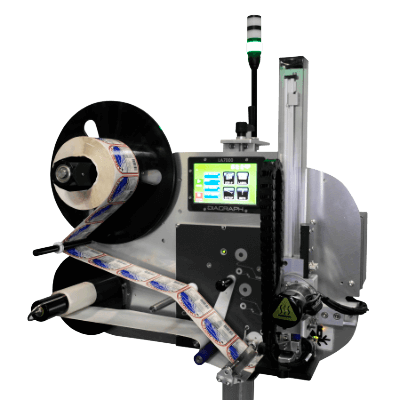
Labeling systems at Diagraph
Would you like to use an all-electric system to label your products? Diagraph has the ideal all-electric label applicators and label printer and applicators for you. All-electric systems are suitable for almost all shapes, formats, sizes and surfaces. Enquire now and automate your labeling process using our high-quality labeling systems.
FAQs
Still have questions? You can find more detailed information here.
What are the benefits of labeling systems?
Speed, cycle rate, reliability and precision of application are among the benefits of modern labeling systems. They can handle large batches and improve quality and output on tasks that are difficult for employees to complete manually.
How do label printers work?
Is a fully automatic label printer and applicator a worthwhile investment?
What our customers say
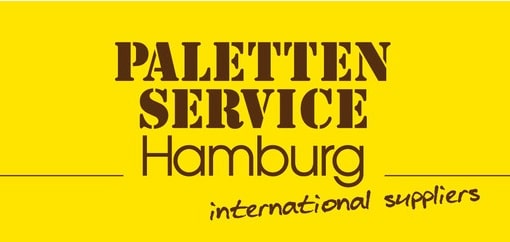
In the past, the labeling on our pallets was often poorly legible and we had a lot of waste.
Since we started using Diagraph printers, every pallet gets a perfect print image and we have been able to reduce our costs in labeling by 50%.
Ingo Mönke, Chairman of the Board, PALETTEN-SERVICE Hamburg AG
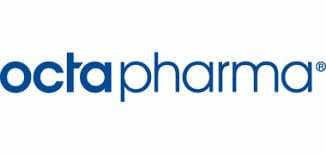
I would like to take this opportunity to thank you for the excellent performance of your service department.
Despite the very late order by us, the printer was repaired so quickly that it was back with us by 08:30.
Many thanks to all your employees!
Thomas Braun, Head of Toolsetters, Octapharma, Dessau-Roßlau
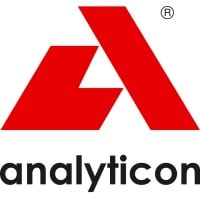
Thank you very much for your support.
You are always extremely helpful and find the right solution.
Elke Schulz, Purchasing Manager, Analyticon Biotechnologies AG, Lichtenfels





